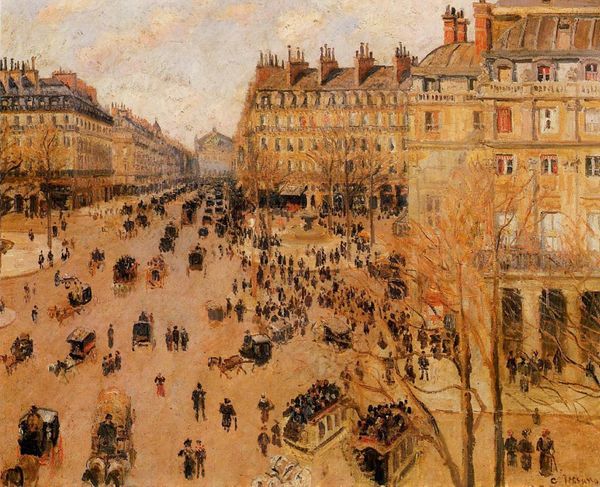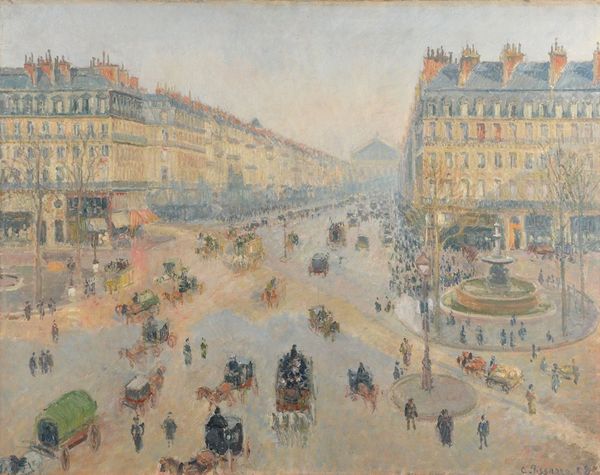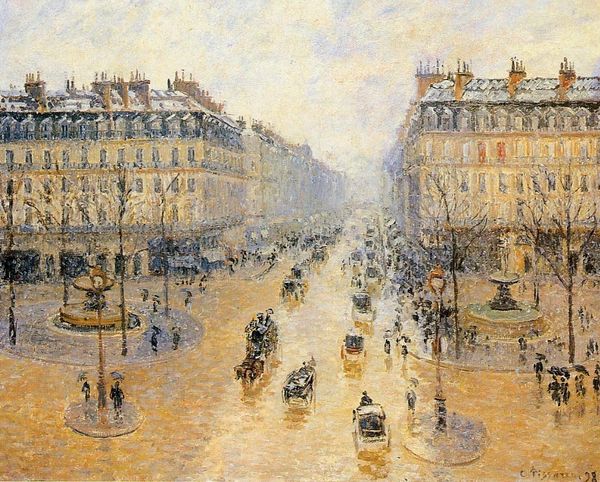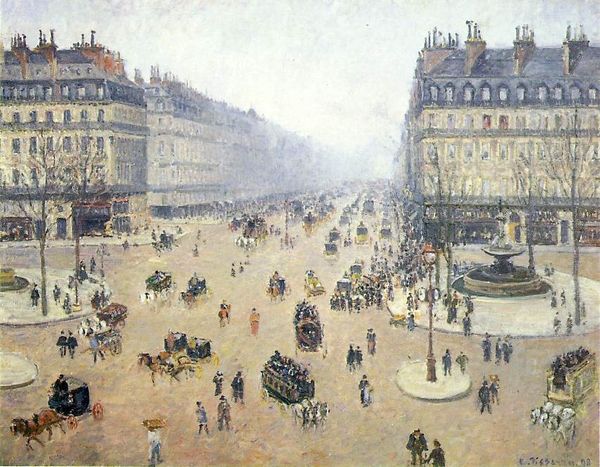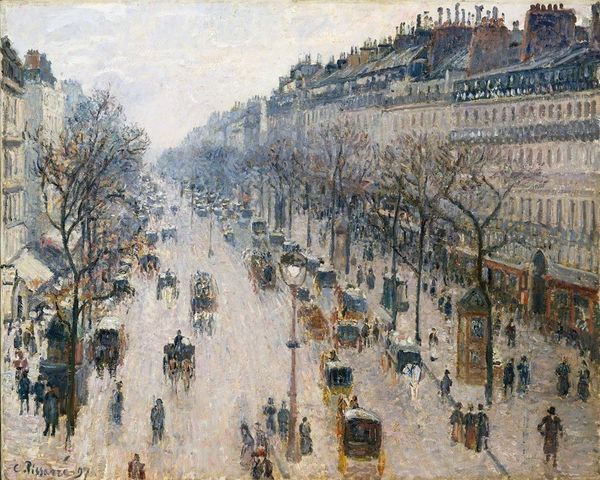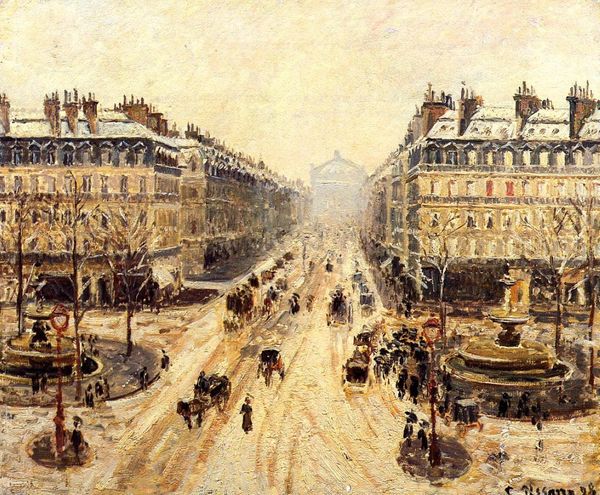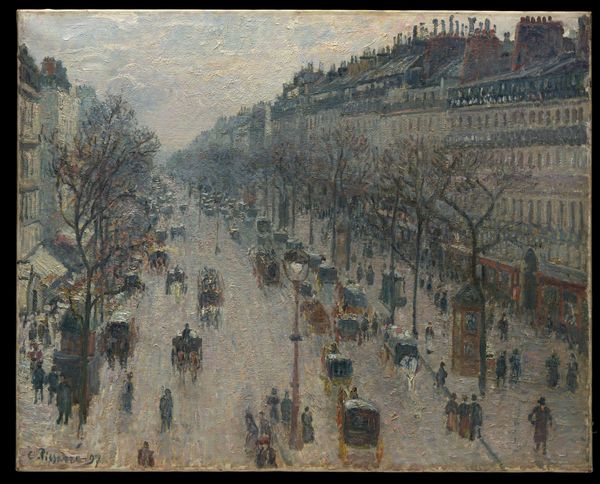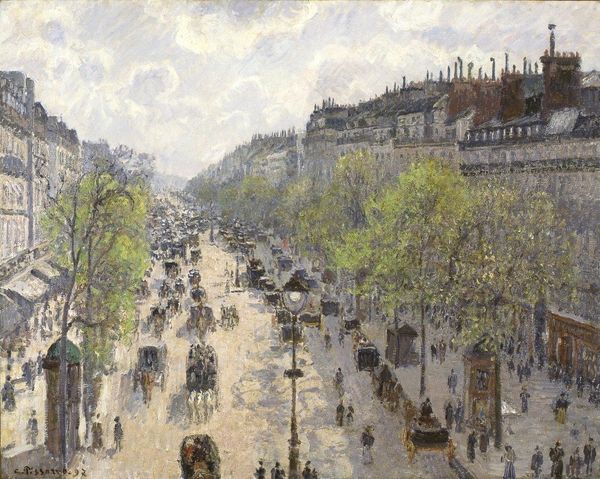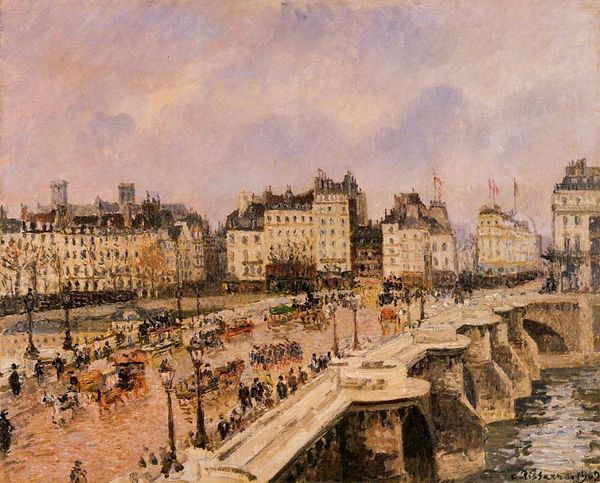
Copyright: Public Domain: Artvee
Editor: This is Camille Pissarro’s “The Place du Havre, Paris” from 1893, rendered with oil paint. It depicts a bustling city scene, yet there's a remarkable serenity to it. The palette is soft, almost dreamlike. What cultural symbolism can we unravel from such a commonplace scene? Curator: Indeed, a "commonplace" scene holds layers. Consider the flâneur, the stroller, almost a symbolic figure in late 19th-century Paris, witnessing and being absorbed by this emergent modernity. What does the painting seem to recall to you, perhaps unconsciously? Editor: I see progress, but also tradition clinging on with the horse-drawn carriages. There's this push-and-pull effect. It's like Paris is trying to figure out what it's going to become. Curator: Precisely! Note how the buildings themselves—these stoic structures—bear witness. Each window could represent a story, a life lived within this rapidly transforming world. What emotional connection does that symbolism ignite? Editor: A sense of being watched, almost. That the past is always looking at us, judging. The present is fleeting. Curator: An excellent observation! Pissarro uses the "fleeting" moment of Impressionism to ask what endures, what remains valuable, amid relentless change. The individual disappears into a crowd, the crowd moves toward modernity, yet...are they truly together, truly sharing a common goal? What remains "sacred" within that progress? Editor: So, even a snapshot of daily life becomes a canvas for broader questions about identity and culture. Curator: Absolutely! Every brushstroke carries intention. Understanding such pieces provides not only insight into past, but allows a visual language for navigating our contemporary condition, its accelerating complexities. Editor: It’s amazing how much is packed into this "simple" painting. I will consider this painting differently from now on.
Comments
No comments
Be the first to comment and join the conversation on the ultimate creative platform.
